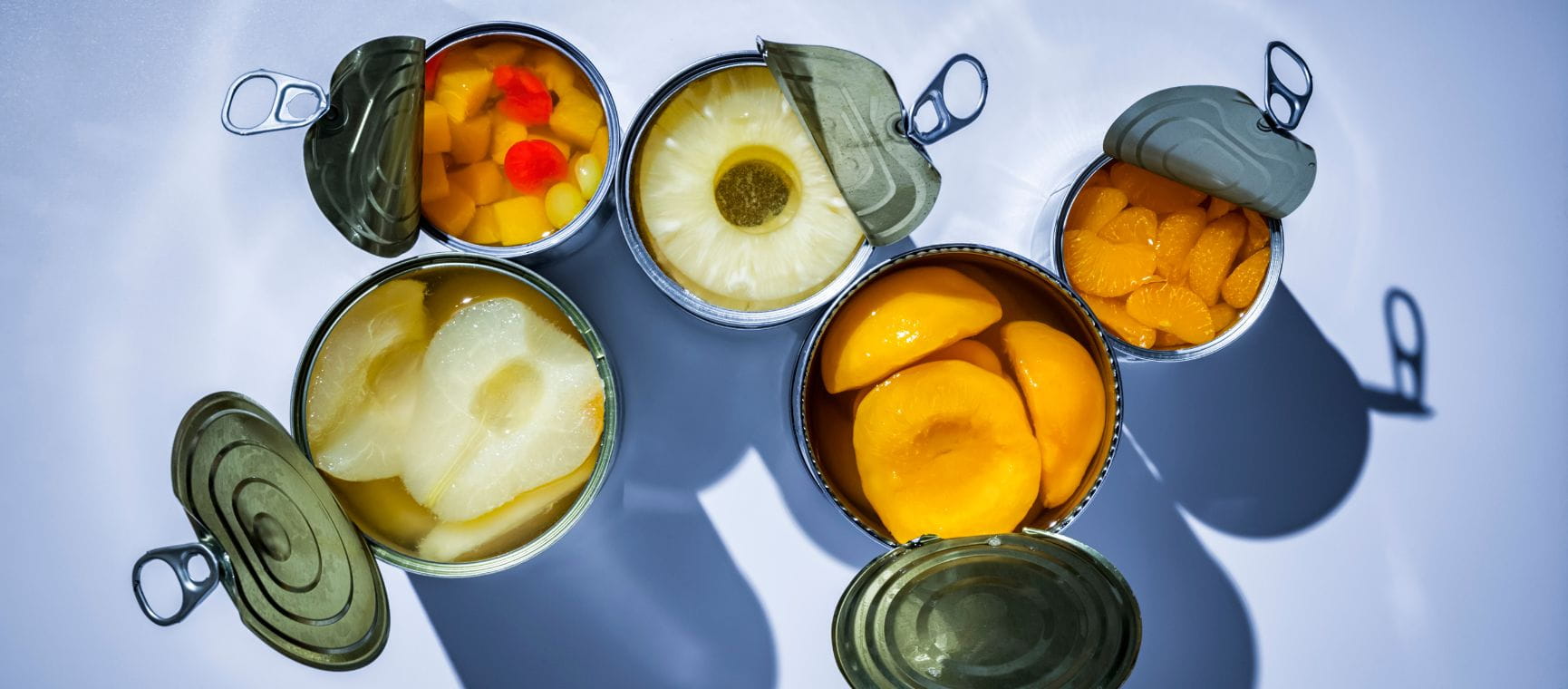
Hands up if there’s a tin of fruit hiding in your cupboard. Maybe it’s the pineapple rings you bought for a gammon recipe that you never got round to making. Or apples, patiently waiting to be turned into pie. Whatever it is, you’re not alone.
Tinned fruit has been a quiet staple of the British kitchen for decades – from the wartime years, when it offered a rare taste of sweetness, to its 1970s heyday, often swimming in syrup and served with a splash of evaporated milk. And in recent years, it’s made a quiet comeback.
Lockdown had many of us stocking up on shelf-stable basics and rediscovering the joy of a humble fruit cocktail.
However, there’s still a stigma attached to tinned fruit, especially when compared to the wellness-world cachet of fresh berries or green smoothies, but can they be a healthy addition to your diet?
“Whilst tinned fruit isn't as nutrient dense as fresh or frozen, it's not without benefits,” says Anna Mapson, registered nutritional therapist and host of the podcast Inside Knowledge for people with IBS.
“The canning process uses a high heat to reduce microbes that could spoil the food. This heat can destroy sensitive vitamins like vitamin C, however if you choose fruit in juice (rather than syrup) it can be a nutrient-dense, high fibre addition to your diet.”
So, is it time to rethink what’s in your cupboard?
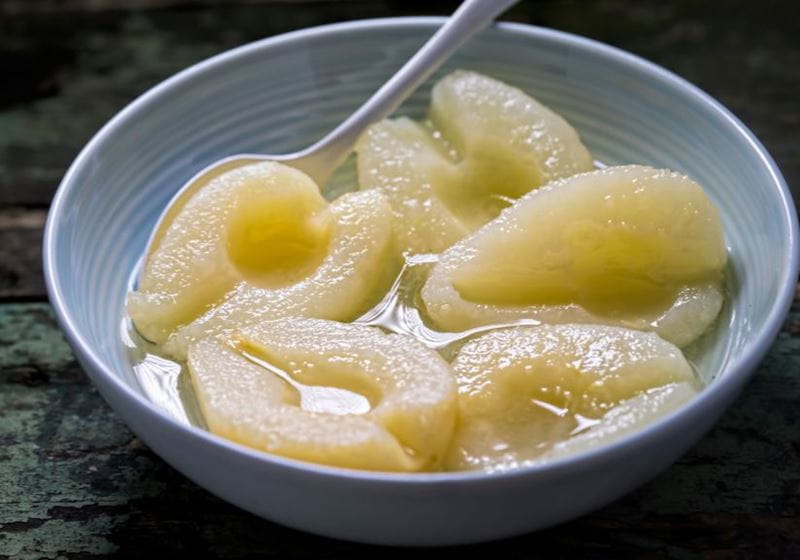
“Tinned fruits count as one of your five a day,” says Mapson. “Whatever you enjoy eating will be a good addition to your diet, so include any that you like the taste of.”
To keep things as healthy as possible, it’s all about choosing the right kind. “Tinned fruit can absolutely be part of a healthy diet,” explains Monica Kranner, registered nutritionist and mindset coach.
“Just choose fruit in juice or water, not syrup, and pair it with protein or fibre.”
Even in a tin, fruit is still packed with gut-friendly fibre. Plus, studies have found that people who eat tinned fruits and vegetables are more likely to consume fibre.
“This is associated with better gut health, heart health and a healthy weight,” says Mapson.
Looking for a low-effort dessert that won’t spike your sugar levels?
“Tinned fruit will be a healthier choice than a trifle or ice cream, mostly due to the added fibre in the fruit,” says Mapson.
Try pairing peaches with Greek yogurt or warming apple slices with a sprinkle of cinnamon.
Let’s not ignore the practical stuff. Tinned fruit is often cheaper than fresh, and it won’t go off before you get round to eating it.
“The benefits of tinned fruit is that you can keep them in the cupboard for those days when your fresh fruit has run out, and still keep up your fibre intake,” says Mapson.
Tinned fruit is the ultimate time-saver – ready when you are and endlessly adaptable. Spoon it over porridge, swirl into yogurt, use in stir fries or just eat it straight from the tin (no judgement here).
Nutritionist Kranner also suggests using it as a clever sugar swap in baking. “Purée prunes or mango instead of sugar in recipes like muffins, energy bars or brownies,” she says.
You may have heard concerns about BPA, a chemical found in some can linings.
“It may be possible for BPA from the plastic to travel around the body," says Mapson. "Although no direct link between eating tinned food and health consequences has been proven.”
In moderation, it’s unlikely to cause any health problems advises Mapson. And if you’re still unsure? Look for BPA-free tins, many brands now offer them.
If you’re looking to up your fibre, tinned prunes should be on your shopping list.
Princes Prunes in juice have 3g of fibre per 100g, which will help you reach the recommended 30g we should all be eating daily.
“Prunes are a powerhouse for gut and bone health, plus, you can blend them into smoothies, muffins or even savoury sauces,” says Kranner.
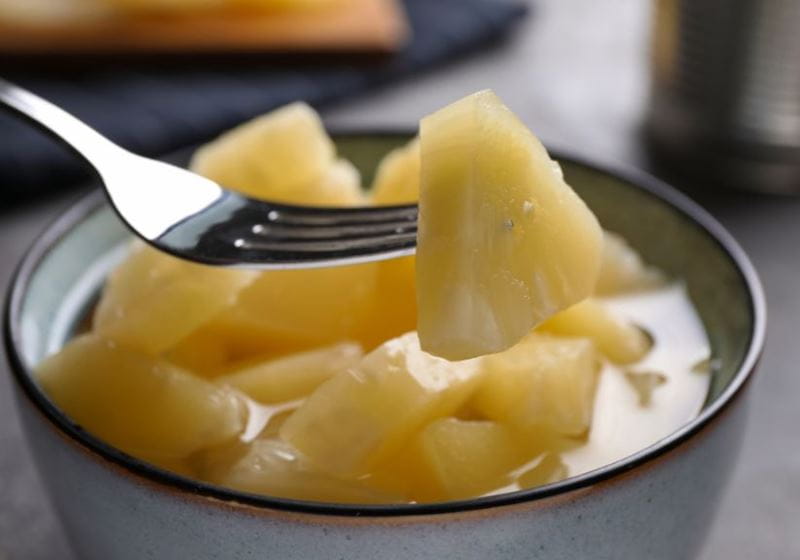
Tinned pineapple might scream 1970s ham-and-pineapple pizza to some, but it’s still a brilliant all-rounder to keep in your cupboard, especially when it comes to nutrition and convenience.
“One of the most nutrient-dense options, pineapple is high in bromelain, a digestive enzyme,” says Kranner.
Princes Pineapple Chunks in Juice are one of the better options when it comes to nutrition, with 1g of fibre per 100g and just 10g of sugar. It’s also naturally low in fat and comes in at just around 50 kcal per 100g.
And the best part? Tinned pineapple is ultra-versatile says Kranner.
“It’s a great addition to stir-fries, homemade sweet and sour dishes or even grilled as a BBQ skewer topping,” she suggests. “Try adding it to slaw for a fresh, tropical twist.”
“Pears are high in fibre so would be a good addition to your cupboard,” says Mapson. And that still holds true, even when they’re tinned.
A 100g serving of Sainsbury’s tinned pear halves in juice contains around 1.4g of fibre. They’re also low in fat, naturally sweet and a good source of potassium, copper, and vitamin C (though the canning process does reduce vitamin C content slightly).
Tinned pears are also incredibly versatile. Straight from the tin, tinned pears make a fuss-free dessert. But they’re also ideal for cooking, think pear crumbles, spiced compotes or warm pear and ginger oats.
Worried about losing nutrients when you cook them? Don’t be. While heat-sensitive vitamin C can break down during cooking, fibre, potassium and most antioxidants remain intact.
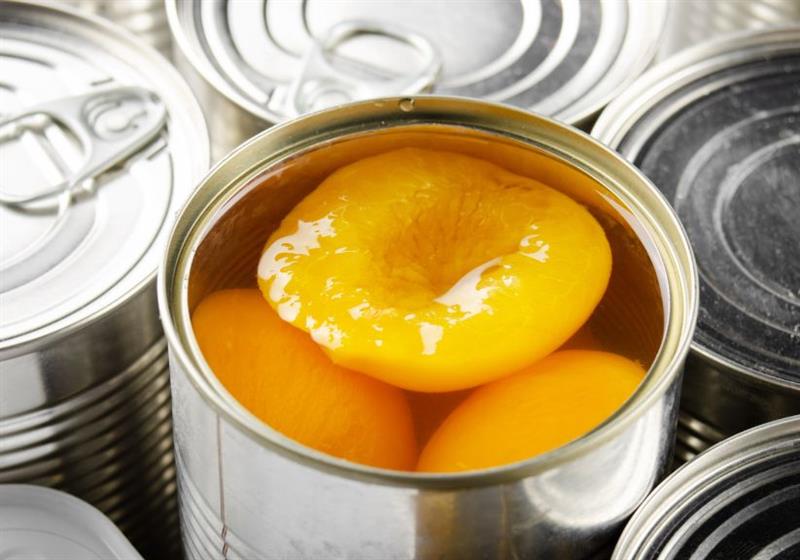
Tinned peaches are one of the most popular options in the canned fruit aisle, but are they still healthy once they’ve taken a heat bath in syrup or juice?
“The most sensitive nutrients tend to reduce through the canning process,” explains Mapson. “These are typically vitamin C and antioxidants, which are sensitive to heat.”
In fact, one study found that tinned peaches were lower in vitamin C, antioxidants and folate compared to fresh, but the levels of vitamin A, vitamin E and carotenoids remained similar.
Interestingly, those nutrients remained stable even after three months in the tin, suggesting that peaches don’t lose more goodness over time once canned.
While they don’t have huge amounts of fibre, they are low fat and if you choose the fruit juice version, relatively low in sugar.
Kranner suggests keeping a small tub of peaches (or your favourite tinned fruit), drained in the fridge with mint leaves or a sprinkle of cinnamon.
“It’s a ready-to-eat snack that feels a little fancy,” she says.
Tinned mandarins are an easy way to enjoy citrus without the mess of peeling or pith. They’re sweet, low in fat and just 43 kcal per 100g – making them a popular pick for a quick, chilled snack.
But with only 0.8g of fibre per 100g and around 11g of sugar, they sit at the lower end nutritionally compared to other tinned fruits, so while they’re refreshing and convenient, they’re best enjoyed occasionally rather than as a daily go-to.
Toss them into salads or pair with Greek yogurt – just keep an eye on how often they land on your spoon.
In fresh mandarins and oranges, the white pith (the spongy layer between the peel and the fruit) is actually a nutritional bonus. It contains fibre and flavonoids– all of which contribute to gut health and antioxidant support.
However, in tinned mandarins, the pith is usually removed during processing to improve texture and appearance. That’s one reason why tinned mandarins are lower in fibre than other fruits – and than their fresh counterparts.
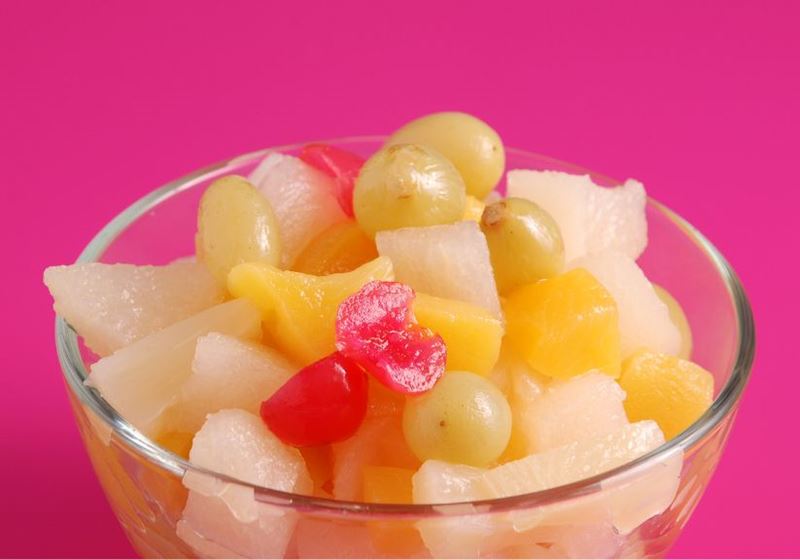
If you’re after variety in one tin, fruit cocktail delivers. This ready-mixed blend of peaches, pears, grapes, pineapple and cherries offers a quick, no-prep way to get a dose of fruit and fibre.
Again, choose one packed in juice (not syrup) and you’ll get around 1g of fibre per 100g, plus a mix of vitamins and minerals including potassium.
Kranner says that fruit cocktail can be very high in sugar so use them in moderation rather than an everyday snack, but this type of tinned fruit is ideal for busy days when chopping fresh fruit feels like too much of a chore.
Don’t let any of your tinned fruit go to waste. “If the juice is 100% fruit juice, use it to sweeten smoothies or stir into overnight oats,” says Kranner.
Leftover fruit? Pop it into an ice cube tray and freeze, it’s then ready to drop into coolers or blitz into a smoothie whenever you need it.
If you love mango but hate the faff of peeling and slicing, tinned mango is a fuss-free alternative. Dole’s Diced Mango in Juice contains just 54 kcal per 100g, with a generous 1.9g of fibre and no added sugar.
The main issue with tinned mango though is that it often comes in syrup, which ups the sugar content considerably, adding 2-3g per 100g.
It's also one of the pricier tinned fruits on the shelf, but you’re paying for convenience and quality and it’s still cheaper than buying fresh mango out of season.
“If syrup is the only option available, give the fruit a quick rinse under cold water,” advises Kranner.
“This can reduce the sugar content by up to 30%. It’s the easiest upgrade you’ll ever make."
Jayne cut her online journalism teeth 24 years ago in an era when a dialling tone and slow page load were standard. During this time, she’s written about a variety of subjects and is just at home road-testing TVs as she is interviewing TV stars.
A diverse career has seen Jayne launch websites for popular magazines, collaborate with top brands, write regularly for major publications including Woman&Home, Yahoo! and The Daily Telegraph, create a podcast, and also write a tech column for Women’s Own.

Find out about Saga's gastronomy holidays here...
They say the way to the heart is through the stomach, and Saga’s thoughtfully crafted food and wine holidays are perfect if you like trying new flavours and exploring traditional methods of cooking.

Health insurance for people over 50 that provides a quicker route to diagnosis and planned medical treatment in a private facility.
Underwritten by Bupa Insurance Limited.
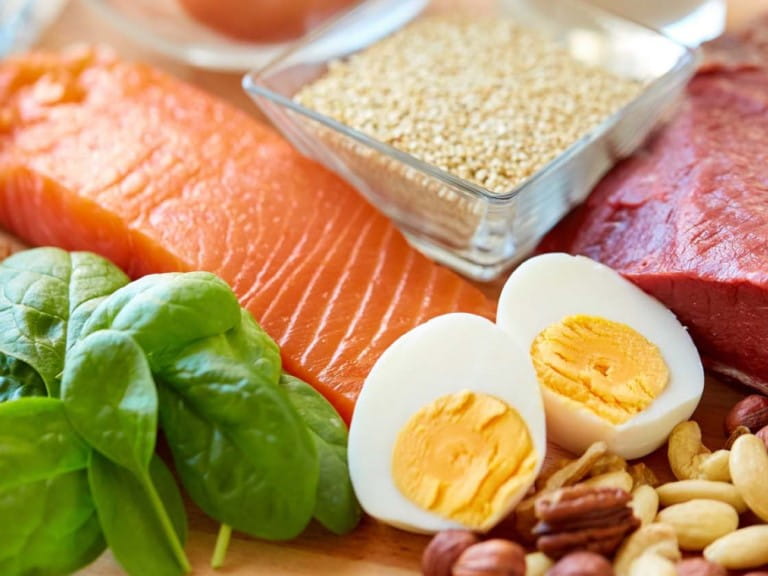
Everything you need to know about protein, from how it benefits your body to the best high-protein foods – and how much you really need.


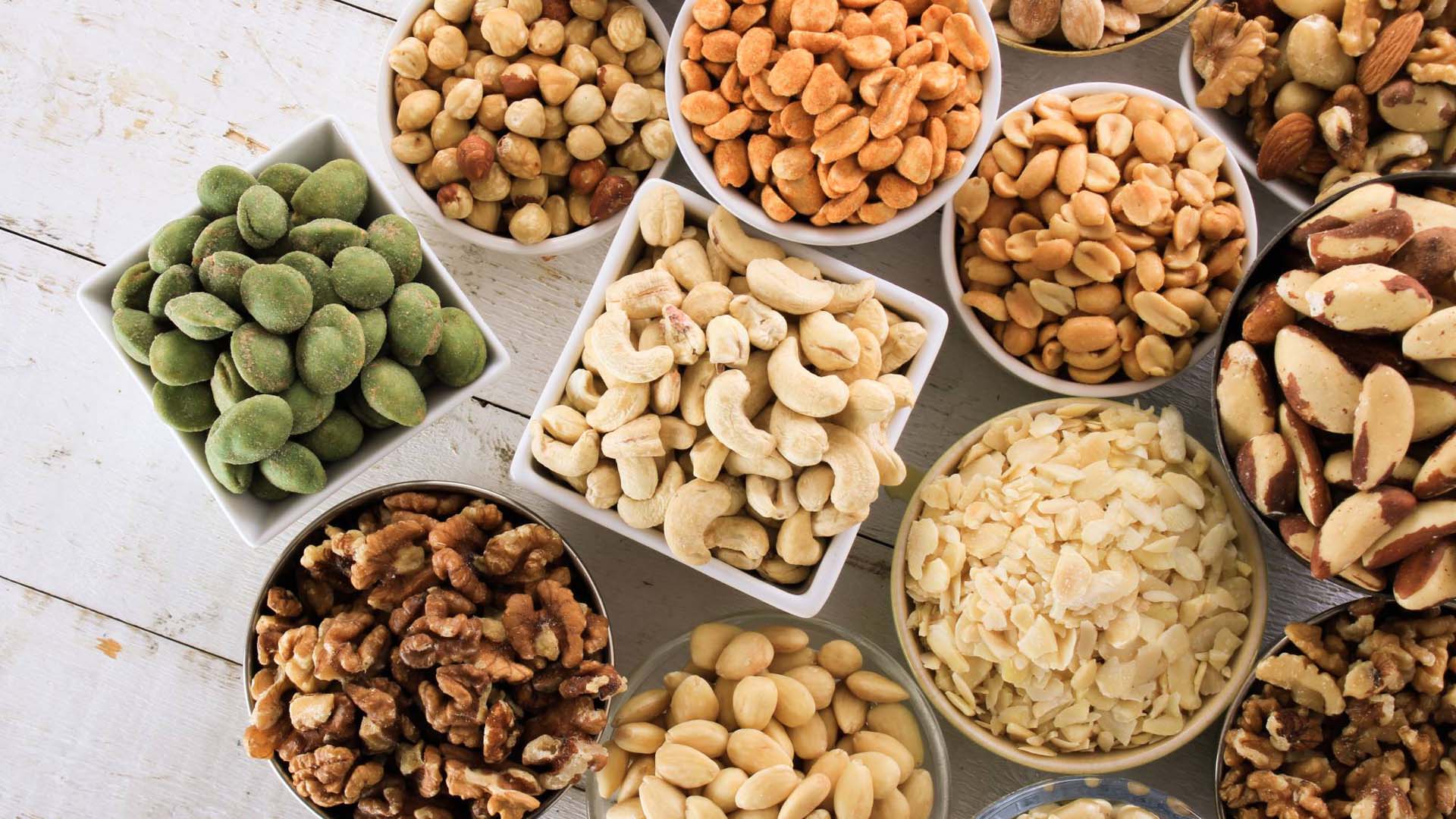
Let’s roast the myths! Not only are nuts less fattening than once feared, research shows they can cut the risk of heart disease too
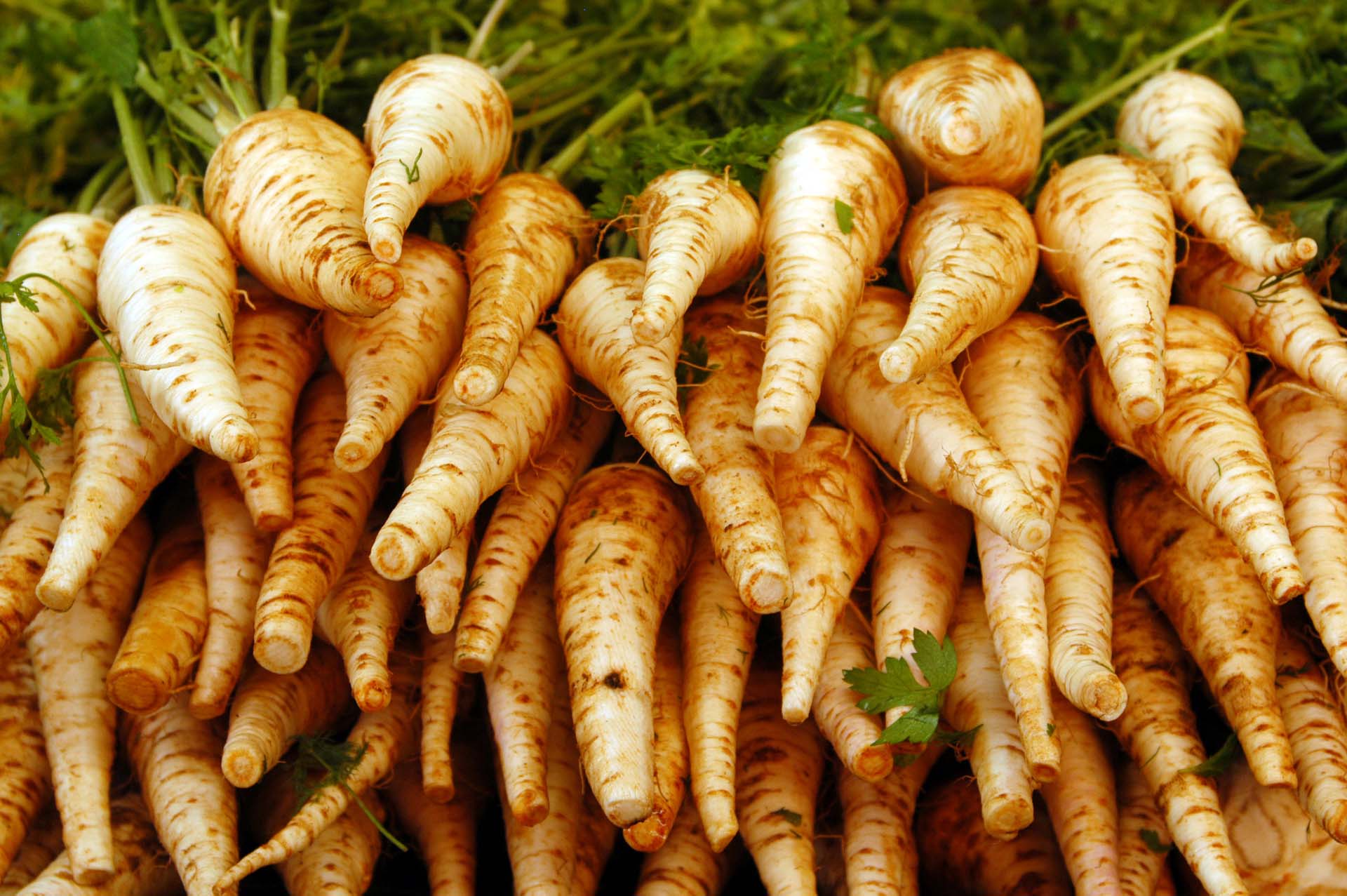
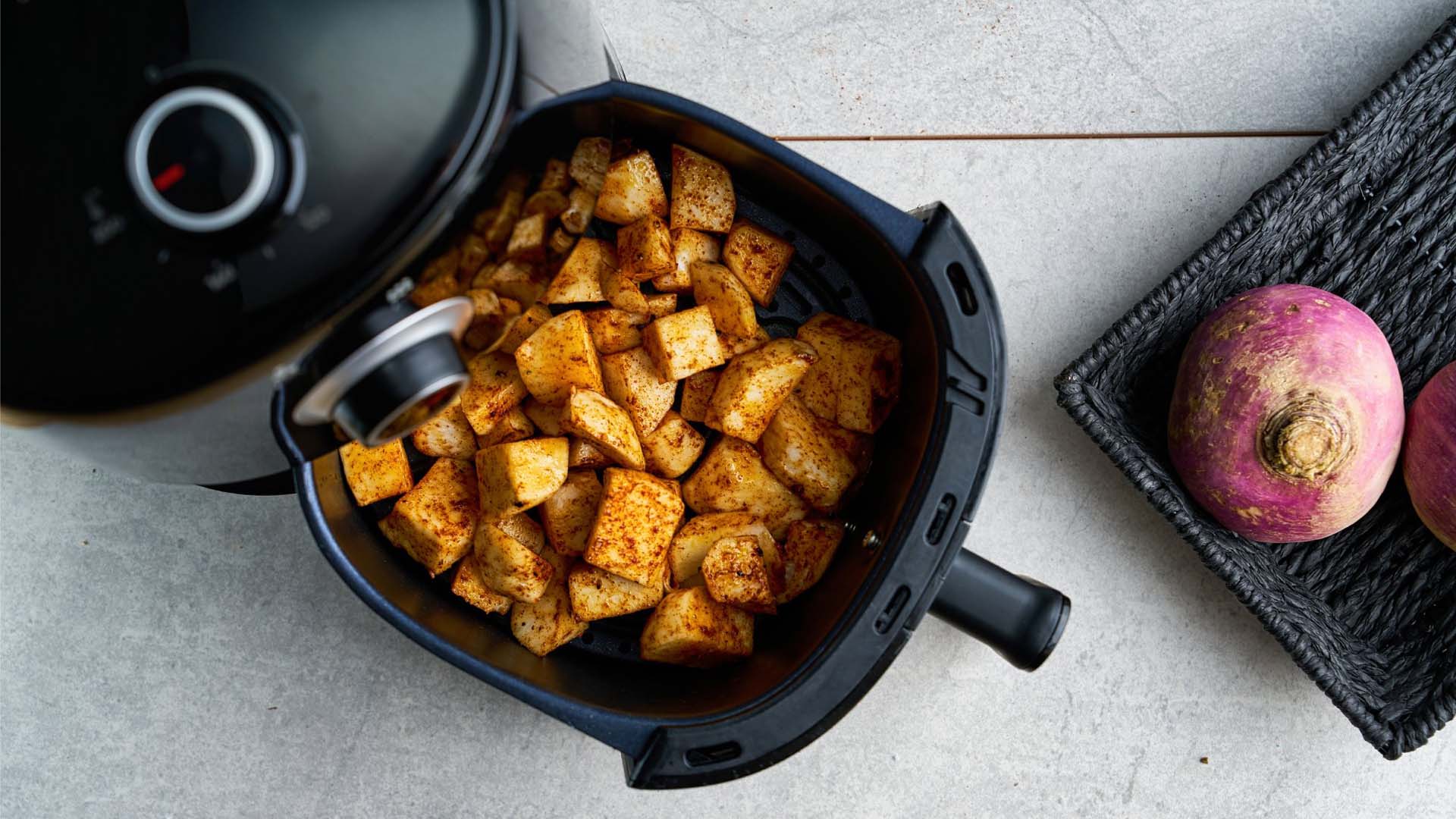
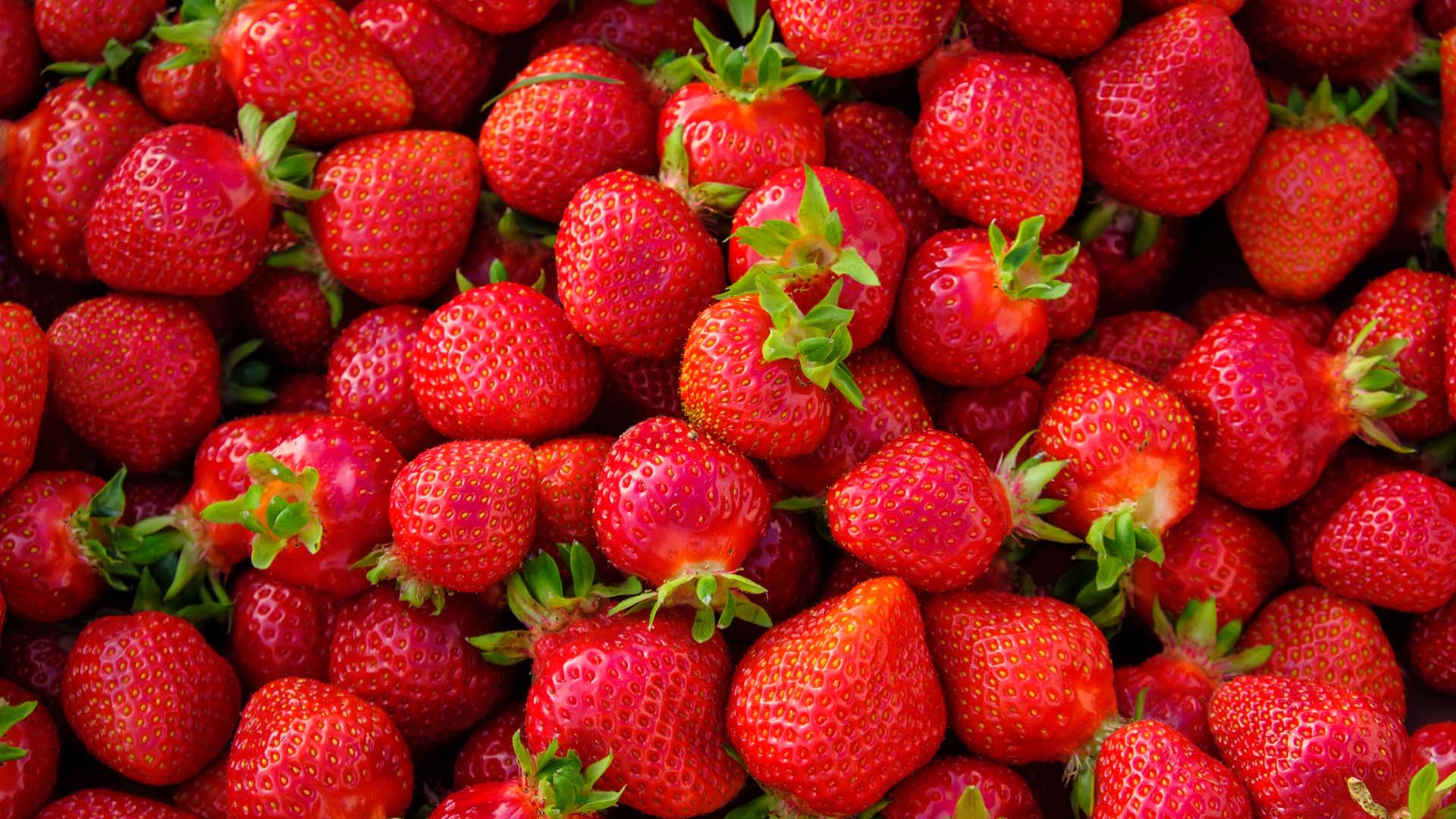
Strawberries don't just taste and look great, they are full of fibre, help your heart health and may even stave off dementia.
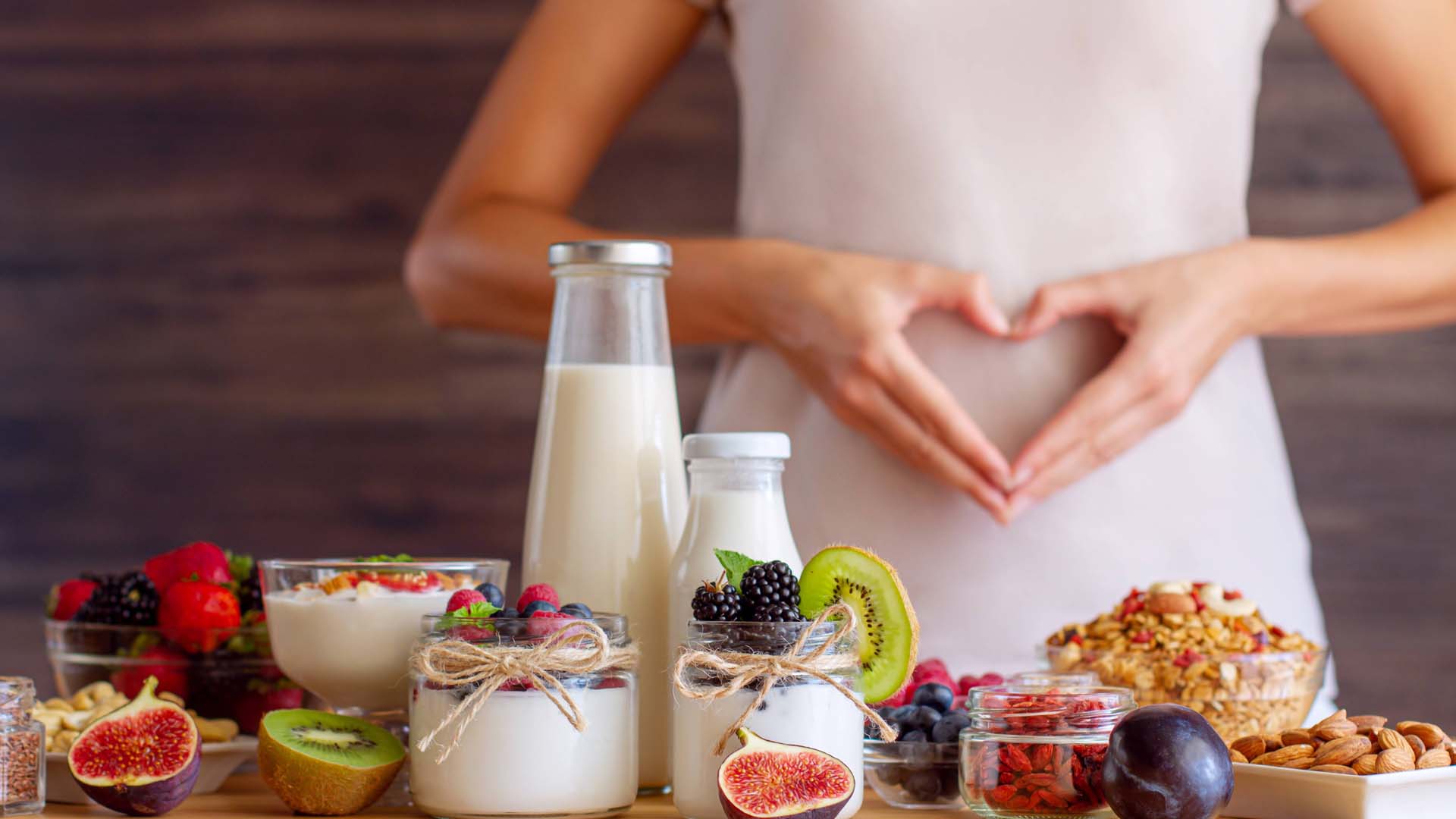
Looking after your gut health could be one of the biggest things that you can do for your overall health. Here are the best foods to keep your gut happy.
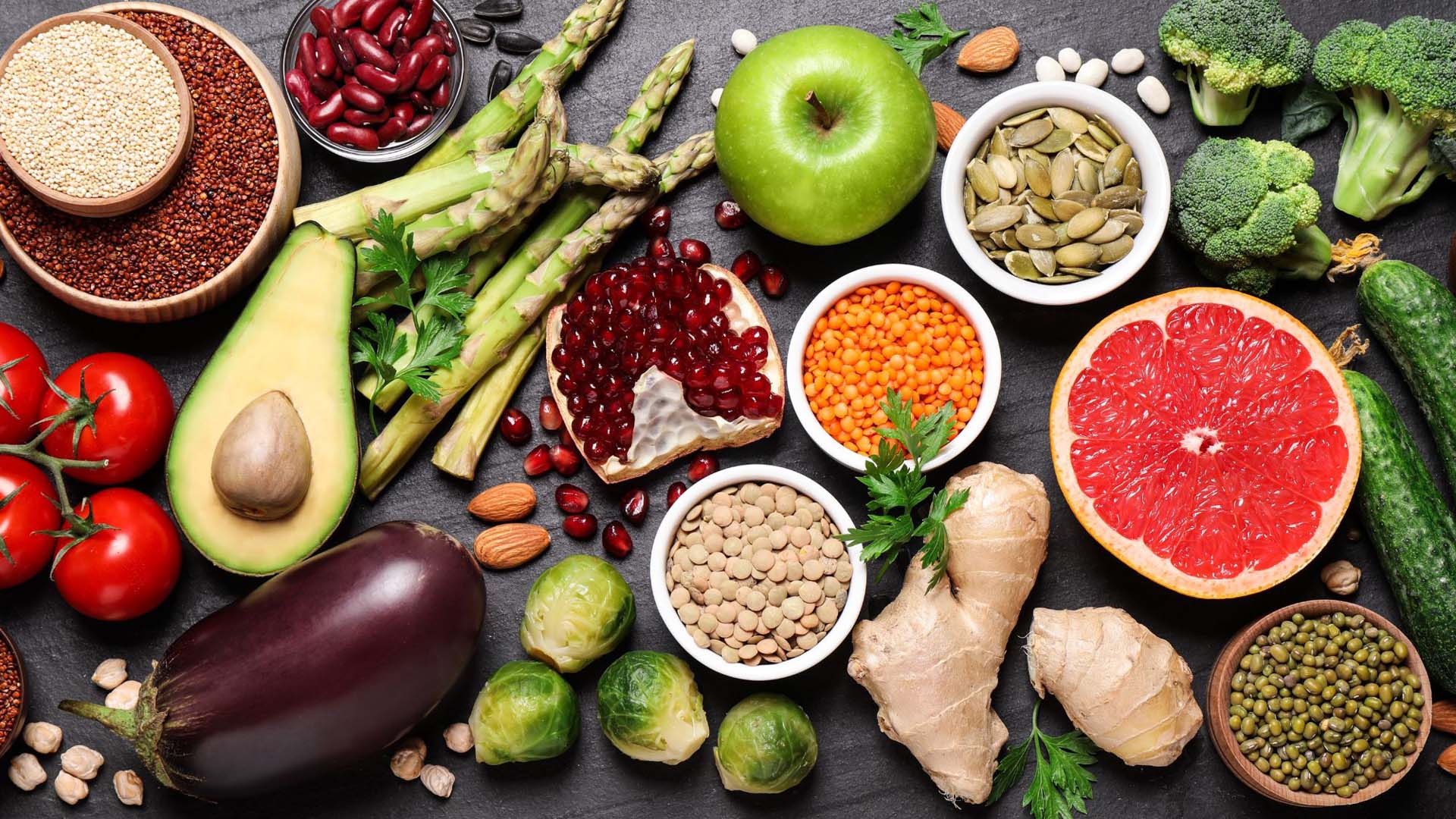
The foods that could help you live longer and protect against chronic illness.